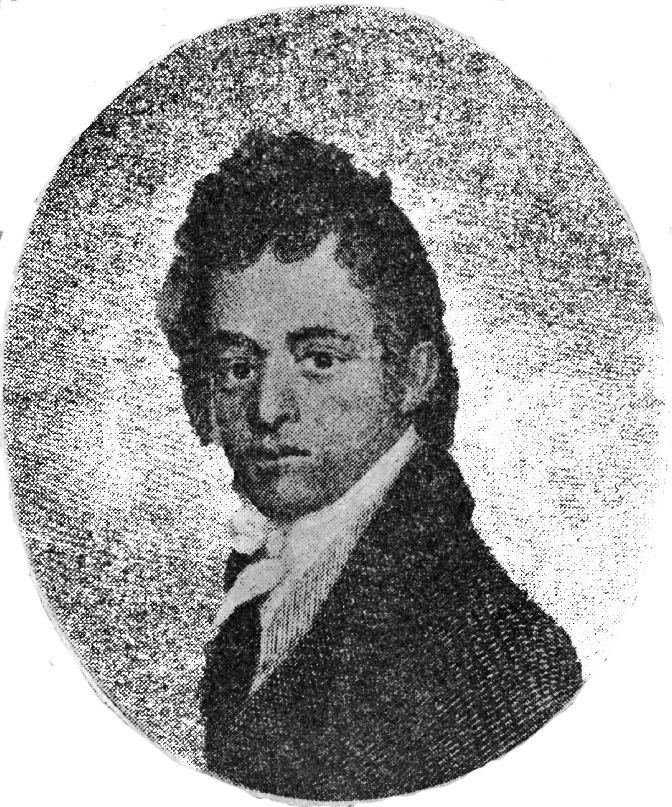Name George Kaumualiʻi Parents Kamakahelei | ||
 | ||
Burial May 30, 1824Waineʻe Church, Maui Issue HumehumeKealiʻiahonuiKinoiki Kekaulike Father Kaʻeokulani,Regent of Maui and Molokaʻi Mother Kamakahelei,Aliʻi Aimoku of Kauaʻi and Niʻihau Died May 26, 1824, Honolulu, Hawaii, United States Spouse Kaʻahumanu (m. 1821–1824), Kaapuwai Kapuaamoku, Kawalu Children Humehume, Kinoiki Kekaulike, Kealiiahonui Grandchildren Queen Kapiolani, Victoria Kinoiki Kekaulike, Harriet Kawahinekipi, Poomaikelani, Bennett Namakeha Similar People Kaʻahumanu, Kamehameha I, Poomaikelani, Queen Kapiolani, Keelikolani | ||
Kauai fire shuts down Kaumualii Highway
Kaumualiʻi (c. 1778–May 26, 1824) was the last independent aliʻi nui (supreme ruler of the island) of Kauaʻi and Niʻihau before becoming a vassal of Kamehameha I of the unified Kingdom of Hawaiʻi in 1810. He was the 23rd high chief of Kauaʻi, reigning from 1794-1810.
Contents
Although he was sometimes known as George Kaumualiʻi, he should not be confused with his son who is more commonly known by that name.
In Hanamaulu, the King Kaumualii Elementary School is named after Kauai's last reigning chief.
Family
Kaumualiʻi was the only son of Queen Kamakahelei, aliʻI nui of Kauaʻi and Niʻihau, and her husband, Aliʻi Kaʻeokulani (c. 1754–1794), regent of Maui and Molokaʻi. Kaʻeokulani was the younger son of Kekaulike, the 23rd Aliʻi Aimoku and Moʻi of Maui. He became the co-king and effectively ruler of Kauaʻi by his marriage.
When Kamakahelei died in 1794, he passed their titles and positions to the 16-year-old Kaumualiʻi, who reigned under the regency of Chief Inamoʻo until he came of age. His first wife and queen was his half-sister Kawalu of Oahu. His second wife was his niece Kaʻapuwai Kapuaʻamohu of Koloa, and finally the queen regent Kaʻahumanu (1768–1832), Kamehameha's widow.
Unification
Kauaʻi and Niʻihau had eluded Kamehameha's control since he first tried to add them to his kingdom in 1796, a year after Kaumualiʻi became king. At that time, the governor of Island of Hawaii led a rebellion against Kamehameha, forcing him to return home. Kamehameha tried again in 1803, but disease ravaged his armies, and he called a retreat to heal his men and work on his strategy. Over the next years Kamehameha amassed the largest armada Hawaiʻi had ever seen: foreign-built schooners and massive war canoes, armed with cannons and carrying his vast army. Kaumualiʻi decided to negotiate a peaceful resolution rather than resort to bloodshed. The move was supported by Kamehameha as well as the people of Kauaʻi and the foreign sandalwood merchants on the island, whose trade was hurt by the constant feuding. In 1810, Kaumualiʻi became Kamehameha's vassal, and all the islands were united for the first time. Kaumualiʻi continued to serve as Kamehameha's governor of Kauaʻi.
In 1815, a ship from the Russian-American Company was wrecked on the island. In 1816, an agreement was signed by Kaumualiʻi to allow the Russians to build Russian Fort Elizabeth. Construction was begun in 1817, but by fall of that year Russians were expelled. Perhaps Kamehameha feared they would support Kaumualiʻi in a bid for independence.
In 1817 he married Kekaihaʻakulou who became known as Deborah Kapule. He ceded Kauaʻi and Niʻihau to Kamehameha
Kamehameha I died in 1819, and the Hawaiians grew fearful that Kaumualiʻi would sever Kauaʻi's relationship with the united Hawaiʻi. Kamehameha's widow Kaʻahumanu was the effective political force in the kingdom. On September 16, 1821 the new young King Kamehameha II arrived and invited Kaumualiʻi aboard. That night they sailed away to Honolulu, where Kaumualiʻi was effectively under house arrest. To make the domination clear, Kaʻahumanu forced him to marry her, to ensure the island chain's union. They remained officially married until his death on May 26, 1824 but had no children. By his wishes, his body was taken to Maui, and buried next to Queen Keopuolani at the tomb of Hale Kamani.
Kaumualiʻi was popular both among his people and foreigners who visited and worked on his islands. Captain George Vancouver, who had given the young king a flock of sheep as a gift in 1792, was thanked with a lavish banquet and described his host glowingly. Kaumualiʻi was described as handsome, likeable, and courteous, as well as a capable leader. He was sincerely mourned by the people of Kauaʻi.
Successors
After Kaumualiʻi's death in 1824, his son by a commoner, George "Prince" Kaumualiʻi Humehume (1797–1826), also known as George Tamoree, attempted to re-establish the independence on Kauaʻi, but was also eventually captured and taken to Honolulu. Humehume died of influenza in Honolulu and his only issue was a daughter Harriet Kawahinekipi Kaumualiʻi. Humehume's half-brother Kealiʻiahonui was also forced to marry Kaʻahumanu. Kaʻahumanu would later abandon Kealiʻiahonui and embrace Christianity. Kealiʻiahonui later married Princess Kekauonohi, the Governess of Maui and Kauaʻi who was a widow of Kamehameha II.
King Kaumualiʻi's granddaughter Kapiʻolani (1834–1899) of Hilo (eldest daughter of Kaumualiʻi's daughter Kekaulike Kinoiki) married king Kalakaua. In 1874, the couple was elected by the Hawaiian legislature as King and Queen of the Hawaiian Islands, as king Kalakaua and Queen Kapiʻolani. Her youngest sister Princess Victoria Kuhio Kinoike Kekaulike (1843–1884) of Hilo was later appointed Governor of the island of Kauaʻi, Princess and Royal Highness. Her other sister Princess Virginia Kapoʻoloku Poʻomaikelani (1839–1895) succeeded her sister as Governor of the island of Kauaʻi and was made Guardian of the Royal Tombs.
Victoria Kuhio Kinoike Kekaulike progeny are regarded by some as "legitimist" claimants to the crown of the Hawaiian monarchy. Her children included:
Only David had descendants, called the House of Kawananakoa.
Hawaii Route 50 on Kauaʻi is named "Kaumualiʻi Highway" in his honor.
